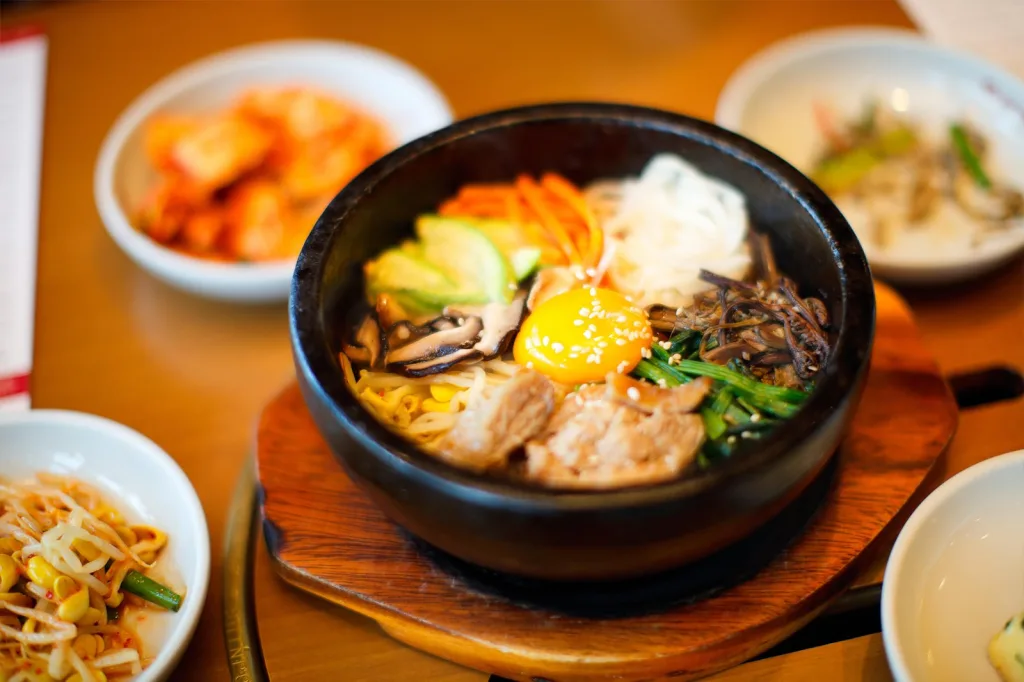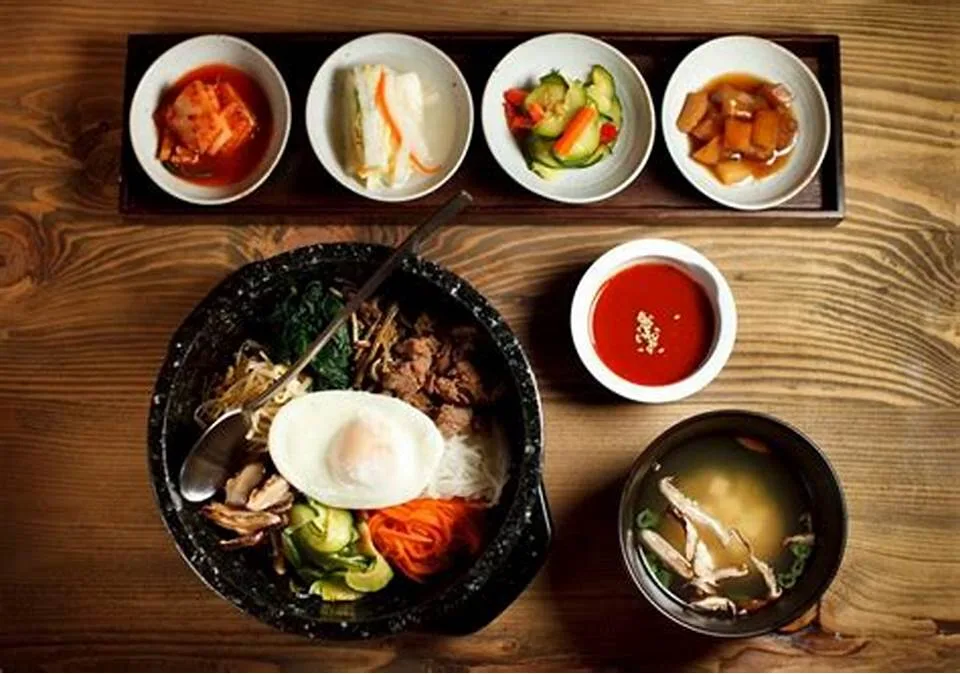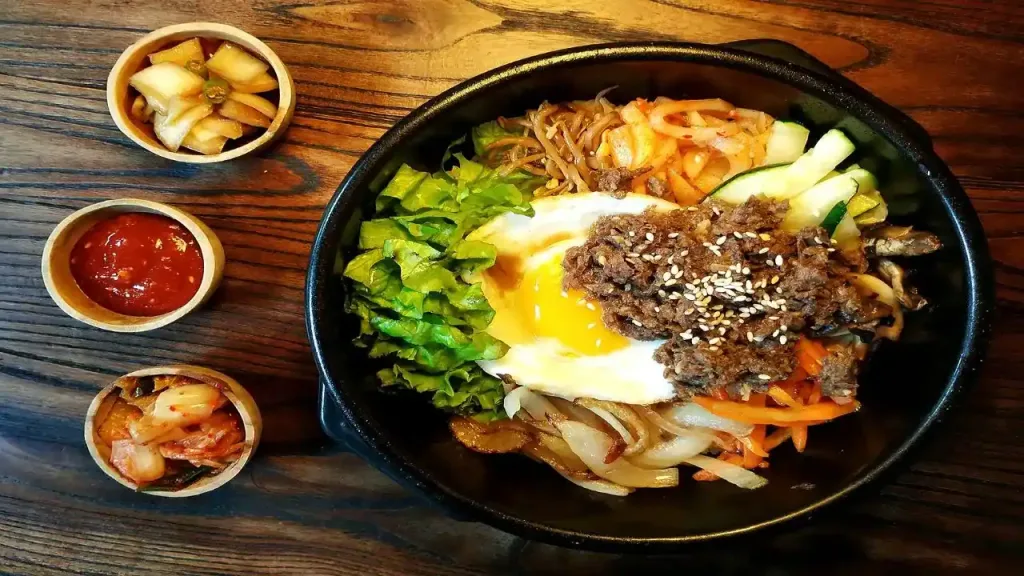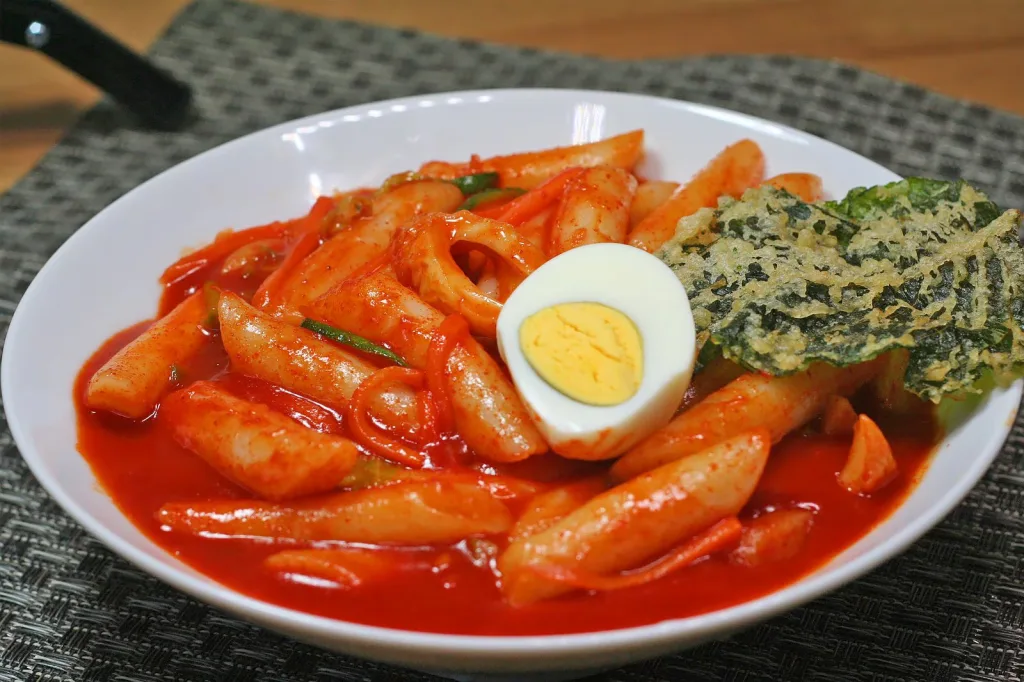Korean cuisine is known for its bold flavors, spices, and variety of ingredients. With a focus on fresh vegetables, whole grains, and fermented foods, Korean cuisine offers a unique and delicious culinary experience.
Korean cuisine is a vibrant and diverse culinary tradition that beautifully balances sweet, sour, salty, and spicy flavors to create harmonious dishes. A defining characteristic of Korean food is its emphasis on fermentation, with staples like kimchi offering a bold taste along with numerous health benefits. This cuisine incorporates a wide variety of ingredients, including fresh vegetables, meats, seafood, and wholesome grains, ensuring a nutrient-rich and flavorful experience.
Among the essential ingredients in Korean cooking, gochujang—a spicy chili pepper paste—adds depth and heat to many dishes. Kimchi, a beloved fermented side dish made from cabbage or radish seasoned with chili peppers, garlic, and various spices, is another cornerstone of Korean cuisine. Fragrant sesame oil is widely used for cooking and seasoning, while ginger and garlic are crucial in enhancing the richness and complexity of flavors.

Several popular dishes showcase the heart of Korean culinary artistry. Bibimbap is a wholesome rice bowl topped with an array of colorful vegetables, savory meat (often beef), and a fried egg. Bulgogi, a marinated and grilled beef dish, is cherished for its tender texture and smoky sweetness. Kimchi stew is a bold, spicy dish made with pork, tofu, and fermented kimchi, offering a comforting warmth. Japchae is a delightful stir-fried glass noodle dish prepared with sweet potato starch noodles, vibrant vegetables, and sometimes meat. Korean BBQ is a social dining experience where diners grill various meats—such as beef, pork, or chicken—right at their table.
Beyond its exceptional flavors, Korean cuisine provides various health benefits. The focus on whole grains, vegetables, and lean proteins makes it a nutritious and balanced diet. Many ingredients, including garlic and ginger, possess antioxidant properties that contribute to overall wellness. Furthermore, fermented foods like kimchi are rich in probiotics, which play a crucial role in supporting gut health.
Overall, Korean cuisine is a remarkable fusion of taste, tradition, and nutrition. Whether indulging in a comforting bowl of Bibimbap or savoring the rich flavors of Bulgogi, this cuisine offers something special for every palate.
Korean cuisine is incredibly diverse, with distinct regional variations shaped by geography, climate, and historical influences. Traditionally, Korea was divided into eight provinces, each with its own culinary identity. While modern transportation and globalization have led to some overlap, many regions still maintain unique flavors and cooking styles.
Northern Korean Cuisine
The northern provinces, including Pyongan and Hamgyeong, are known for their milder flavors and hearty dishes. Due to the colder climate, fermentation plays a crucial role, with dishes like dongchimi (a mild, watery kimchi) being popular. Pyongyang naengmyeon, a cold buckwheat noodle dish, is a signature meal from this region, often enjoyed with a light, tangy broth.

Central Korean Cuisine
The central regions, including Gyeonggi and Chungcheong, are influenced by royal court cuisine, which emphasizes refined flavors and elaborate presentation. Hanjeongsik, a traditional multi-course meal featuring a variety of side dishes, originated here. The region also incorporates a mix of mountain and coastal ingredients, leading to a balanced diet.
Southern Korean Cuisine
The southern provinces, such as Jeolla and Gyeongsang, are famous for their bold and spicy flavors. Jeolla, in particular, is known for its extravagant meals with numerous side dishes. Gyeongsang cuisine features seafood-rich dishes, including hoe (sliced raw fish) and spicy seafood stews. The warmer climate allows for a greater variety of fresh produce and seafood.

Jeju Island Cuisine
Jeju Island has a distinct food culture due to its coastal environment and volcanic soil. The island is known for its seafood-heavy diet, including abalone porridge and grilled black pork. Unlike mainland Korea, Jeju cuisine relies less on rice and more on barley and sweet potatoes.
Each region of Korea offers a unique culinary experience, reflecting local traditions and ingredients. Whether you’re savoring the delicate flavors of central Korea or indulging in the fiery dishes of the south, Korean cuisine is a fascinating journey through history and geography. Which regional style intrigues you the most?
Cultural traditions play a significant role in shaping Korean regional cuisine, influencing everything from ingredients to cooking techniques and dining customs. Korea’s long history, geographical diversity, and seasonal variations have all contributed to the distinct culinary identities found across different regions.

Historical Influence
Korean cuisine has been shaped by centuries of dynastic rule, religious practices, and foreign interactions. The Joseon Dynasty (1392–1897) emphasized Confucian principles, which led to the development of Hanjeongsik, a formal multi-course meal featuring a variety of side dishes. Meanwhile, Buddhism, which discouraged meat consumption, influenced the creation of vegetarian temple cuisine, particularly in regions with strong monastic traditions.
Geographical and Seasonal Impact
Korea’s diverse geography has led to regional specializations. Coastal areas, such as Jeolla and Gyeongsang, are known for their seafood-rich dishes, including hoe (sliced raw fish) and spicy seafood stews. In contrast, mountainous regions like Gangwon rely on hearty grains, wild vegetables, and root-based dishes due to limited agricultural land. Seasonal changes also dictate food preservation methods—fermentation is widely used to ensure food availability during harsh winters.

Traditional Cooking Methods
Different regions have developed unique cooking techniques based on available resources. Jeju Island, for example, has a distinct food culture due to its volcanic soil and coastal environment, leading to a diet rich in seafood, barley, and black pork. In contrast, Pyongyang in North Korea is known for its milder flavors, with dishes like Pyongyang naengmyeon, a cold buckwheat noodle dish enjoyed with a light, tangy broth.
Social and Cultural Practices
Korean cuisine is deeply tied to communal dining traditions. Korean BBQ, where diners grill meat at the table, reflects the country’s emphasis on shared meals and social interaction. Additionally, seasonal festivals often feature specific foods—Chuseok (Korean harvest festival) is celebrated with song Pyeon (rice cakes), while Lunar New Year is marked by tteok Guk (rice cake soup).
Overall, Korean regional cuisine is a reflection of the country’s rich cultural heritage, blending historical influences, geographical diversity, and communal traditions. Whether it’s the refined dishes of royal court cuisine or the bold flavors of southern Korea, each region offers a unique taste of Korea’s culinary identity. Which aspect of Korean cuisine interests you the most?

# Conclusion
Korean cuisine is a vibrant and delicious culinary tradition that offers a wide range of flavors and ingredients. With its emphasis on balance, fermentation, and variety, Korean cuisine is not only delicious but also nutritious and healthy. Whether you’re trying Bibimbap, Bulgogi, or Kimchi Stew, Korean cuisine has something to offer every palate.
